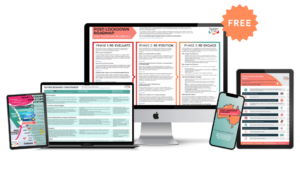Your website is a powerful tool that can generate leads and sales for your small business. However, it’s important to remember that this isn’t limited to just online bookings. Your website should be structured to capture the 95% of visitors who visit your site but aren’t ready to book just yet. This is where using a lead magnet becomes an effective strategy for increasing website conversions and ultimately sales.
A lead magnet is a valuable piece of content or offer that is given away for free in exchange for a user’s contact information (e.g. email address). By collecting this information, small businesses can then use it to nurture leads and convert them into paying customers.
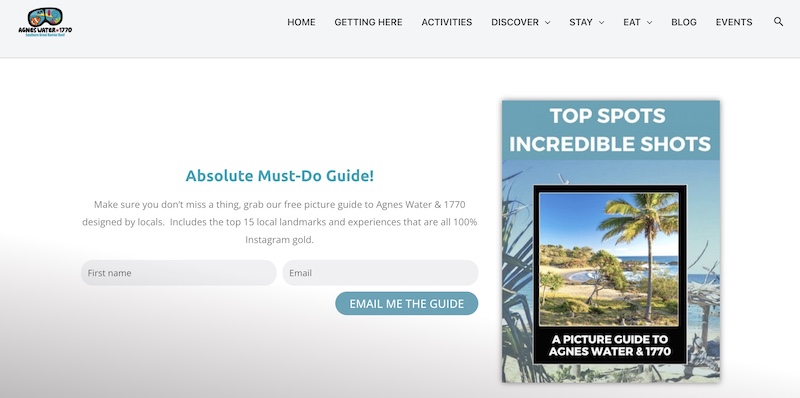
A lead magnet can help you segment your audience and target them with specific offers that will increase the chances of conversion. But that’s not all, the lead magnet can also be used to generate business in other ways, such as creating opportunities for upselling and cross-selling, and ultimately growing your customer base.
How can you increase sales using a lead magnet?
Scenario
- A visitor lands on your website and is interested, but not ready to buy (this is the case for 95% of tourism website visitors)
- These visitors will be presented with a popup or special offer that they have to put their email address in to receive (i.e. download)
- These visitors will then enter your email marketing automation (we call this a nurture sequence) which triggers the email with the downloadable offer, followed by whichever automation you have created (e.g. a series of emails that nurtures them on a path to purchase)
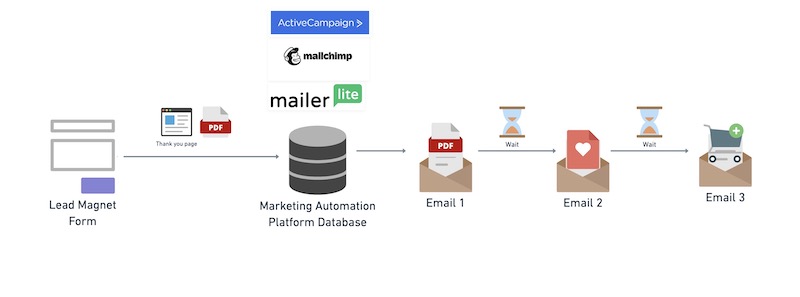
Sounds complicated! But, think of it like this, if your online shop was a brick-and-mortar store and you had 100 visitors in it, and only 5 buying, wouldn’t you have your best sales assistant at the ready to ensure they don’t walk out empty-handed?
A nurture sequence is that sales assistant. But right now we only want to focus on the lead magnet.
Then, once you have created a lead magnet you can begin to set up the 3-step nurture sequence:
- The Opt-In: generally a pop-up or form on your website
- The Lead Magnet: the ‘gold nugget’ you promise to deliver upon receipt of the email address
- The email sequence: the pre-written email sequence you write to nurture your leads towards a sale
Best practice do’s for creating lead magnets
- identify your target audience: understand who your target audience is and what they are looking for as this will help you create a lead magnet that is tailored to their interests, needs and wants.
- offer something of value: this could be a free e-book, visitor guide, weekend itinerary, webinar, or even a discount code.
- make it easy to access: send them an email with a downloadable link with instant access to the lead magnet.
- promote it prominently: make it easy for visitors to find your lead magnet. For example, this could be a pop-up, call-to-action button on your homepage or a dedicated landing page for the lead magnet.
Best practice don’t for creating lead magnets:
- don’t make it too generic: your lead magnet should be tailored to your target audience, not be a generic offer that could apply to anyone.
- don’t make it too salesy: your lead magnet should be focused on providing value, not on making a hard sell.
- don’t make it too difficult to access: if it’s too difficult for visitors to access, they may lose interest and move on.
- don’t forget to follow up: once you have collected a visitor’s contact information, don’t forget to follow up with them. This could include sending them additional content or offers or even scheduling a call to discuss their needs further.
3 tourism lead magnet examples
Creating a lead magnet can be an excellent way for small businesses to attract and engage potential customers.
By following the best practice dos and don’ts outlined above, small businesses can begin creating lead magnets that are tailored to their target audience and provide real value.
Remember to keep it simple, focus on providing value, and follow up with leads to convert them into paying customers. If you are creating a brochure, downloadable guide, template or anything along those lines, we recommend using Canva (our favourite & free design editing tool).
Example #1
Below is a best-practice lead magnet itinerary guide from Wheatbelt Way.
The 20-page brochure includes:
- overview of the region
- key travel pillars
- history
- week-long itinerary recommendation
- 4-day self-drive itinerary
- Weekend guide for surrounding towns and cities
- Accommodation recommendations
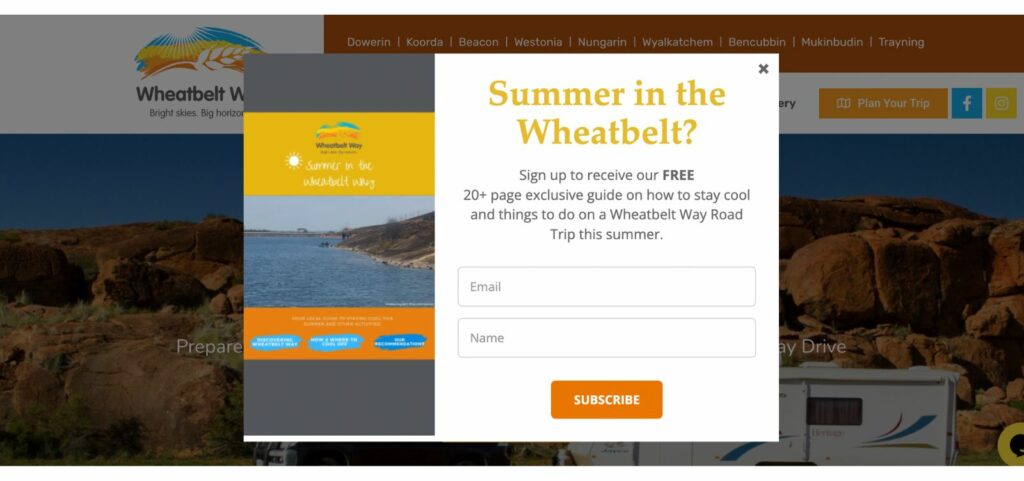
Example #2
Below is a best-practice lead magnet holiday guide from Sky View Units.
The 8-page brochure includes the:
- top 6 nearby beaches
- top 3 walks
- top 7 places to eat
- top 8 recreational activities
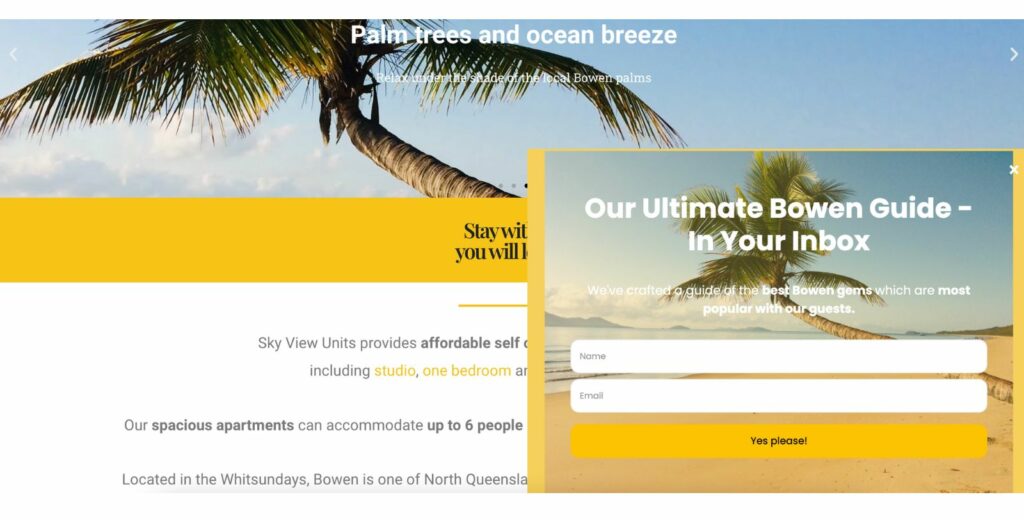
Example #3
Below is a best-practice lead magnet pet guide from Gibson’s Pet Friendly.
The 13-page brochure includes the:
- top 7 dog-friendly cafes nearby
- top 3 dog-friendly beaches
- top 10 activities
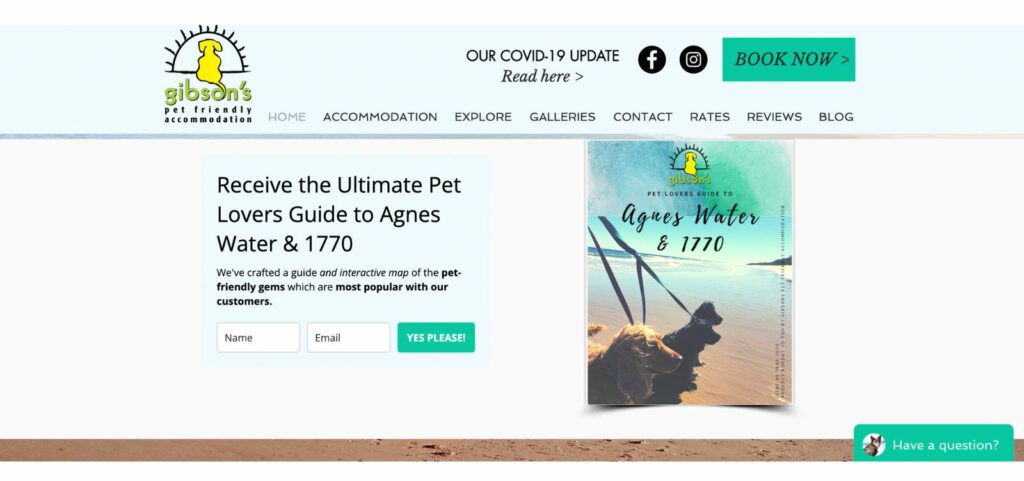
Gibson’s Pet-Friendly lead magnet appears on the homepage (image above) but also appears as a pop-up after users spend 45 seconds on the website (image below).
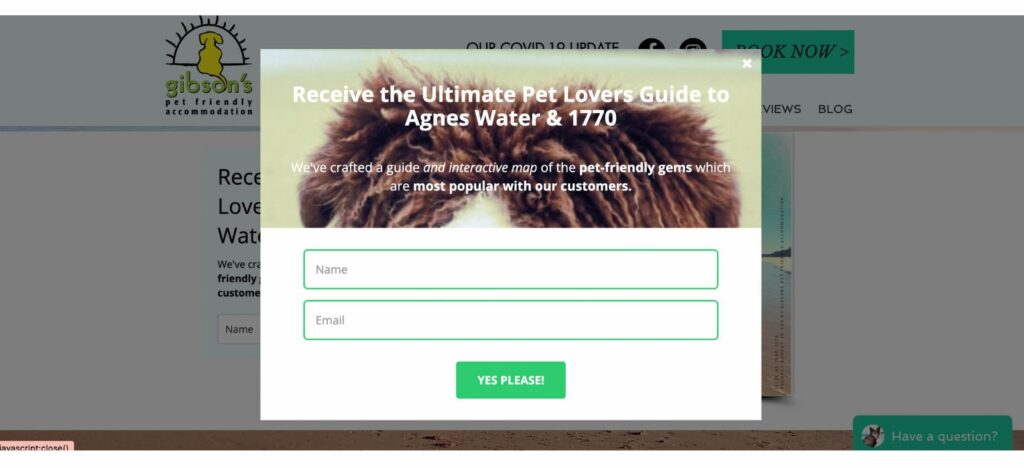
Next step to increase sales using a lead magnet
- research like-minded businesses and competitors. Do they use lead magnets? Sign up for them all and take notes!
- indulge in your target market analysis and make a list of what these customers would find both useful and valuable to receive from you
- sign-up for the free version of Canva
- create a lead magnet brochure using the magazine template
- head to our website and or email marketing course to learn more about steps 1 and 3 of a nurture sequence


